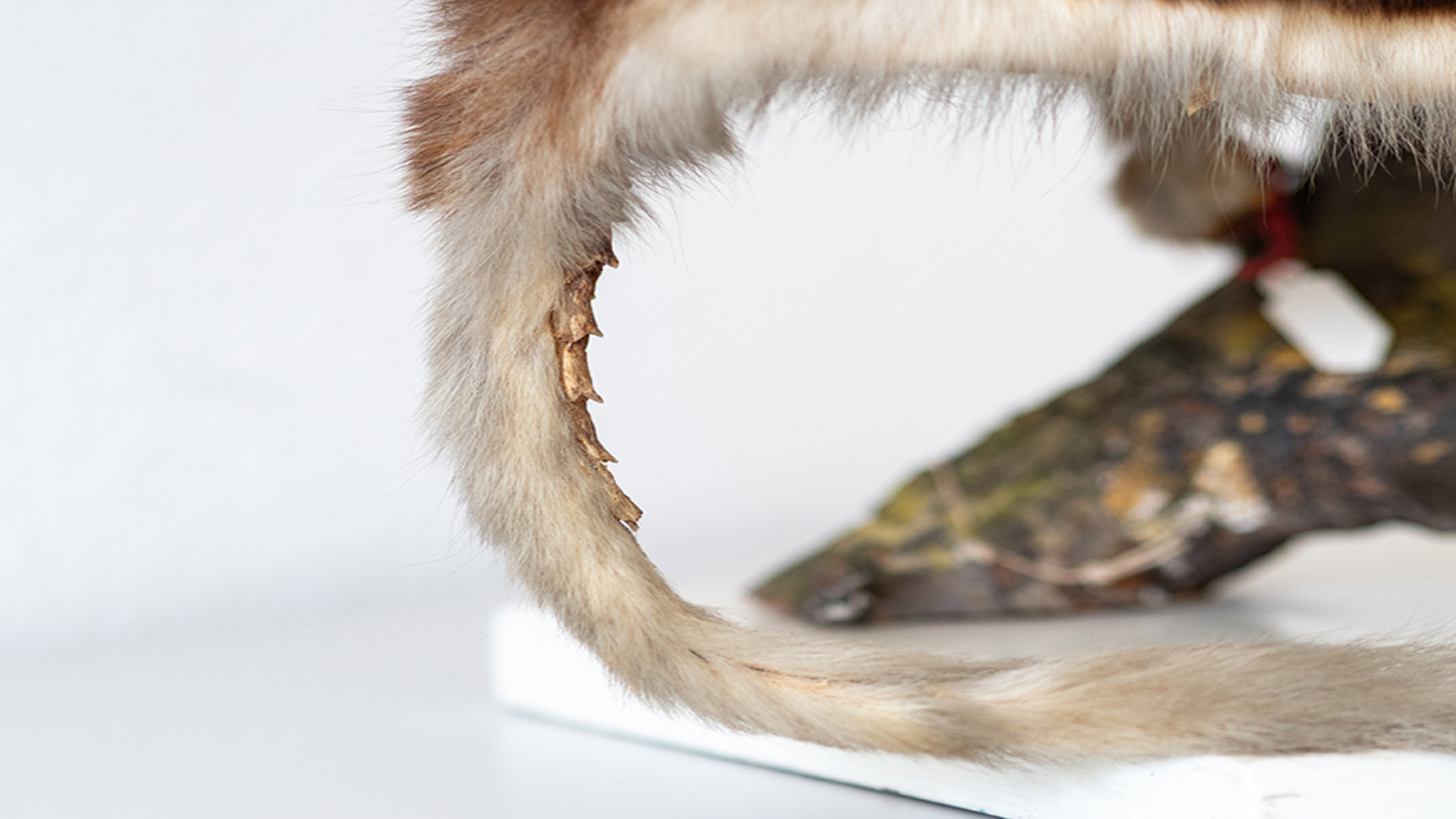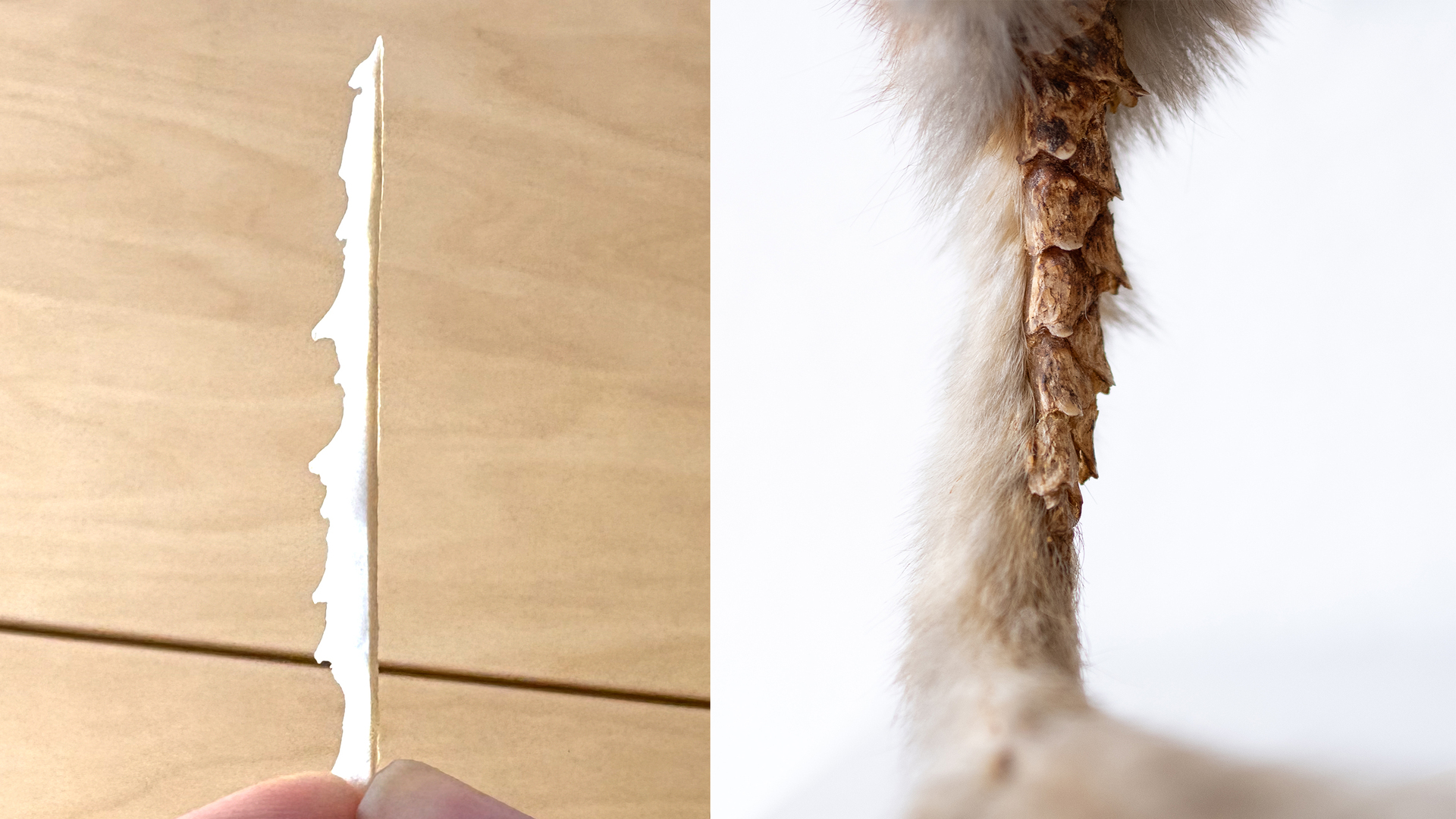Scientists in Switzerland have turned to a rare flying squirrel’s remarkable treetop agility to develop a new generation of adaptable, energy-efficient bionic robots and drones.
Researchers at Empa, the Swiss Federal Laboratories for Materials Science and Technology, in collaboration with their colleagues from the Max Planck Institute for Intelligent Systems in Germany, drew entirely on nature to develop a novel approach for advancing robotic systems.
Fascinated by how African scaly-tailed squirrels manage to grip even the smoothest tree bark with ease, the team analyzed these nocturnal animals’ scale-covered tails to understand the mechanics behind their exceptional stability.
While biologists had long suspected the scales played a role in helping squirrels grip and navigate tree bark, their exact function had never been scientifically tested, until the team took on the challenge.
Tail spines that prevent slipping
Scaly-tailed squirrels, which among the least studied mammals, are small creatures with body lengths ranging from about 2.4 to 17.7 inches (six to 45 centimeters), depending on the species.
Native to the rainforests of West Africa, these animals use skin membranes stretched between their limbs to glide between treetops, similarly to flying squirrels, though the two are not closely related.
For the study, the research team focused on the squirrels’ unique bodily feature, the thorn-covered scales on the underside of their tails, in a bid to demonstrate how they enable the animals to remain secure and stable on uneven surfaces.
Credit: Empa
Ardian Jusufi, PhD, professor and head of the Soft Kinetic research group at Empa, explained that the team employed both analytical models and physical replicas, including artificial ‘squirrels’ fitted with 3D-printed tail scales and claws, to test their hypotheses.
“Animal locomotion in irregular terrain is complex,” Jusufi explained, adding that simulations alone aren’t sufficient to understand it. “That’s why we develop moving physical models for experimental validation.”
Jusufi, who previously uncovered the landing behaviors of rainforest geckos using soft robotic models to illuminate the mechanics of tail reflexes, emphasized that the team began their work with a static model.
What comes next?
The team now plans to add movement to their models to better understand how the scaly tail helps absorb impact and stabilize squirrels during challenging or abrupt landings.
“If a squirrel approaches a tree but suddenly notices a predator, it must swiftly redirect to another tree mid-flight,” Jusufi said. “We suspect the scaly tail helps absorb the energy of such emergency landings, preventing falls.”
Over the long term, Jusufi intends to conduct field studies to observe and film the squirrels as they land in their natural habitat, an approach he previously used in his gecko research and considers essential for accurately modeling animal movement.
The findings could potentially help shape the design of small, autonomous robots and drones for applications in agriculture, environmental monitoring, and disaster relief.

Credit: Empa
By replicating structures and behaviors refined through evolution, researchers in biomimetics aim to build machines capable of navigating complex environments with greater efficiency and stability.
“Animal locomotion involves a complex interplay of processes, many of which are poorly understood,” Jusufi concluded in a press release, adding that replication begins with deep understanding. “Particularly, the role of the tail remains understudied in many species and locomotor modes.”
The broader goal of his research is to deepen understanding of how animals move through complex terrain. By using animated physical models to simulate these movements, the team can reduce reliance on animal testing while advancing robotics and biomechanics.
The study has been published in the Journal of the Royal Society Interface.
